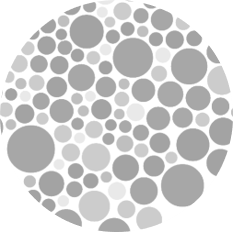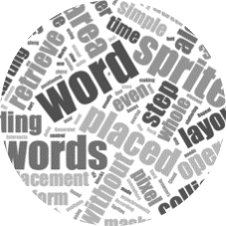
Dong-Young Jang
Seoul National University
CIRP Annals | 2005
Ju Han Kim; Hyun-Kyung Chang; Dong-Chul Han; Dong-Young Jang; S.I. Oh
A cylindrical capacitive displacement sensor (CCDS) was developed and applied for monitoring end milling processes. Dynamic characteristics of a spindle-assembly were measured using the CCDS and a designed magnetic exciter. The technique to extract the spindle displacement component caused only by cutting from the measured signals using the CCDS was proposed in the paper. For the quantitative estimation of dynamic cutting forces from the measured signals, a mechanistic model considering tool deflection, which is derived from the dynamics of the spindle tool system, was proposed.
international conference on advanced intelligent mechatronics | 2005
Hyeong-Joon Ahn; Jinhyun Kim; Joon-Jae Lee; Jong-Hyuk Kim; Dong-Young Jang; Dong-Chul Han
In this paper, we proposed a new measuring method of the speed-dependent tool tip compliance of a high-speed machine tool spindle using an AMB (active magnetic bearing). Single sine wave current excitation is injected through the AMB, and the displacement and force responses are measured with a CCS (cylindrical capacitance sensor) and a dynamometer, respectively. Then, the tool tip compliance can be estimated accurately without any phase delay by dividing the frequency response from the current to the displacement by that from the current to the force. A flexure test rig was designed to represent dynamics of a machine tool spindle and the feasibility of the proposed measuring method was proven experimentally comparing with the impulse test Finally, the tool tip compliance of a high-speed machine tool spindle was measured successfully using the proposed measuring method
Journal of the Acoustical Society of America | 2013
Han Wang; Zhongzheng Liu; Dong M. Shin; Zhuo (Georgia) Chen; Younghak Cho; Dong-Young Jang; Yong-Joe Kim; Arum Han
Mechanical properties of cells such as compressibility are regarded to be different as cancer cells progress into metastatic state. Traditional methods for measuring mechanical properties of single cells such as AFM and micropipette aspiration require labor-intensive procedures and can cause damage to cells due to direct contact, thus unsuitable for high-throughput measurement. Acoustophoretic force exerted on particles under acoustic-standing-waves depends on the particle and medium’s vibro-acoustic properties. Thus, cells with different mechanical properties show different mobility under acoustic resonant field, which can be analyzed to decipher the mechanical properties of cells. Here we present a high-throughput, single-cell-resolution, cell compressibility measurement approach based on acoustic-standing-wave-induced force, and the finding that head and neck cancer cells having different metastatic capacities show noticeable differences in compressibility. The acoustophoresis chip has a straight flow ...
IEEE\/ASME Journal of Microelectromechanical Systems | 2014
Chang-Woo Ban; Jaewon Park; Dong-Young Jang; Arum Han
Easy fabricability, along with other unique properties, has made poly(dimethylsiloxane) (PDMS) one of the most commonly used materials for microfluidics-based microdevices. However, unlike other polymer materials commonly used for microdevices, the PDMS cannot be easily etched or further changed upon polymerization, and therefore, fabrication method has been rather limited to replication molding. Here, we demonstrated liquid-phase capillary etching of the PDMS microchannels with tetra-n-butylammonium fluoride (TBAF) and characterized its etching profiles depending on the initial microchannel widths, TBAF flow rates, TBAF concentrations, and substrates used for the microfluidic channel sealing. The characterization showed that the microchannel circumference etch rate was linearly proportional to the TBAF flow rate and was faster at higher TBAF concentration. On the other hand, influence of the TBAF concentration on the horizontal and vertical etch rates was vastly different, with the vertical etch rate being much more affected by the concentration change. Potential applications of the liquid-phase capillary etching method were demonstrated by fabricating the PDMS microchannels with round-shaped cross sections, a microdevice with embedded 3-D metal electrodes with the electrodes directly exposed to the microfluidic channel, and a glass-PDMS-glass sandwich microchannel for high-clarity optical detection. We believe that the characterization of the liquid-phase capillary etching along with the applications demonstrated here will provide new capabilities for fabricating the PDMS-based microdevices that could not be easily fabricated by conventional replication molding processes.
Transactions of The Korean Society of Mechanical Engineers A | 2009
Yong-Suk Kim; Dong-Young Jang
This study is focused on simulation-based dimensional tolerance optimization process (DTOP) to minimize vehicle pulls by reduction of dimensional variation in front suspension system. In previous studies, the effect of tires and wheel alignment sensitivity have mainly been investigated to eliminate vehicle pulls in nominal design condition without allocating optimal tolerance level for selected components, among various factors regarding vehicle pulls such as vehicle design parameters, vehicle weight balance, tires, and environmental factors. Unfortunately, there are wide variations in the real vehicle, and these have impacted actual vehicle pulls, especially wheel alignment effects from suspension geometry variation has not been considered in the previous studies. In the tolerance design of suspension, tolerance variables with the uncertainty such as parts dimensional variation, assembly process, datum position and direction, and assembly tool tolerance has a great influence on the variation of the suspension dimensional performances. This study introduces total vehicle pull prediction model in considering major key factors for vehicle pull sensitivity. The Monte Carlo-based tolerance analysis model using Taguchi robust method is developed to optimize dimensional tolerance parameters, satisfying on the target variation level. 기호설명 SWT : 조향 휠 토크 μ
Journal of the Acoustical Society of America | 2013
Han Wang; Zhongzheng Liu; Chiwan Koo; Sungman Kim; Younghak Cho; Dong-Young Jang; Yong-Joe Kim; Arum Han
Detection and quantification of extremely small amount of oil on site and at low cost has broad applications in environmental monitoring, both in oil spills as well as in routine marine/costal ecosystem monitoring. For example, dispersed oil, generated through the use of chemical dispersants in oil spills to break up oil slick into small droplets so that they can be rapidly diluted in 3D space are the greatest concern and poses the most challenges in detection. Fluorometry is the current standard method, however is bulky and expensive, limiting its wide deployment in the field. Here we demonstrate for the first time the development of an acoustic standing wave based microfluidic platform capable of processing large amount of liquid samples from which dispersed oil can be concentrated and separated to a detectable level by acoustophoretic force. The microfluidic platform consists of a recirculation channel structure into which dispersed oil droplets can be continuously separated from the main sample flow s...
Transactions of The Korean Society of Mechanical Engineers A | 2009
Dong-Young Jang; Chang-Woo Ban; Young-Hwan Lim; Suk-Ki Hong
In this paper, bonded wafer analysis system is proposed using laser beam transmission; while the transmission model is derived by simulation. Since the failure of bonded wafer stems in void existence, transmittance deviations caused by the thickness of the void are analyzed and variations of the intensity through the void or defect easily have been recognized then the testing power has been increased. In addition, large screen display on laser study has been done which resulted in acquiring a feasible technique for analysis of the whole bonding surface. In this regard, three approaches are demonstrated in which Halogen lamp, IR lamp and laser have been tested and subsequently by results comparison the optimized technique using laser has been derived.
Vacuum | 2012
Chung-Soo Kim; Sung-Hoon Ahn; Dong-Young Jang
Lab on a Chip | 2014
Han Wang; Zhongzheng Liu; Sungman Kim; Chiwan Koo; Younghak Cho; Dong-Young Jang; Yong-Joe Kim; Arum Han
Microelectronic Engineering | 2009
Chong-Sun Kim; Joo-Cheol Park; Won-Shik Chu; Dong-Young Jang; Soo-Hwan Kim; Sug-Joon Ahn



